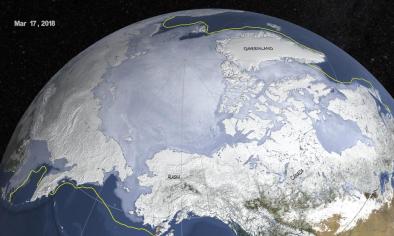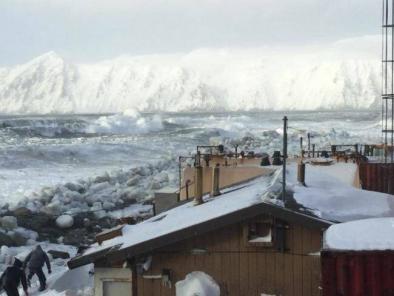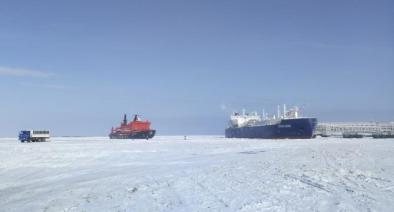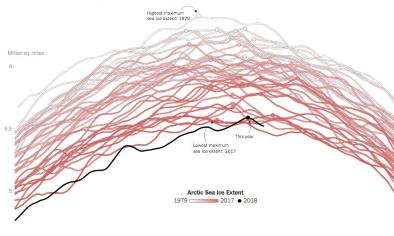Arctic sea ice at record low January levels

The part of the Arctic covered by sea ice in January was the smallest for the month since records began in 1979, federal scientists announced Tuesday.
January ice cover in the Arctic was a whopping 525,000 square miles less than average, which is an area the size of Texas and California put together.
Sea ice is frozen ocean water that melts during the summer and refreezes in winter. It floats on top of the ocean.
The report was released Tuesday by the National Oceanic and Atmospheric Administration.
The Arctic has warmed more dramatically than any place on Earth. "While there is always large variability in the Arctic winter, the 'persistence' of the above-average temperatures is quite striking in the last few years," said Zack Labe, an atmospheric scientist at the University of California, Irvine.
Sea ice in the Arctic affects wildlife such as polar bears, seals and walruses. It also helps regulate the planet’s temperature by influencing the circulation of the atmosphere and ocean. It can affect weather in the U.S.
The amount of sea ice in the Arctic has steadily declined over the past few decades because of man-made global warming, according to NOAA.
"Greenhouse gases emitted through human activities and the resulting increase in global mean temperatures are the most likely underlying cause of the sea ice decline," the National Snow and Ice Data Center said.
...
And it's not only Arctic sea ice that's melting. The opposite side of the globe was experienced a near record low last month: Antarctic sea ice extent in January was 17.4% below average, the second-smallest January ice cover on record behind only 2017, NOAA said.
Related Content






